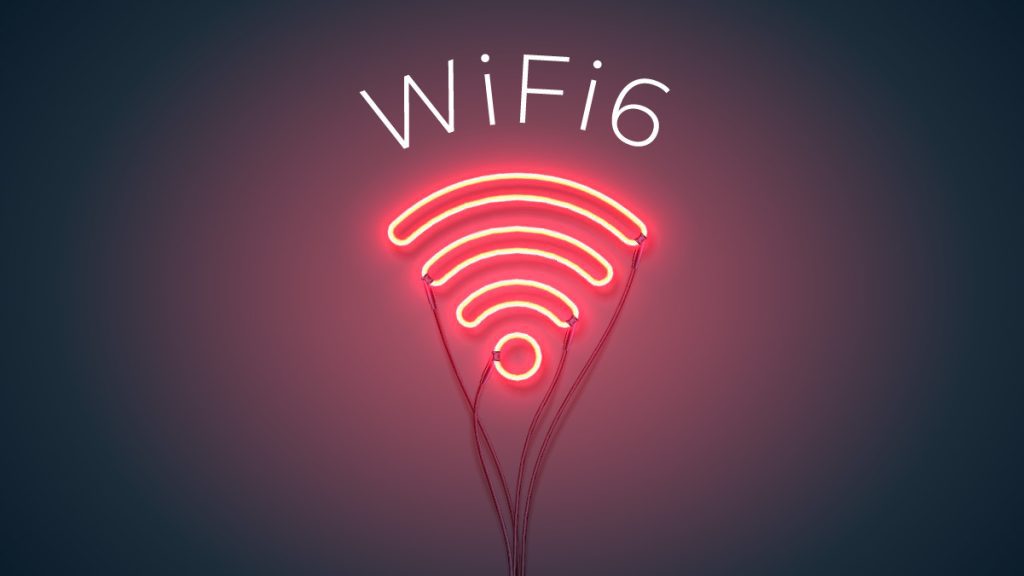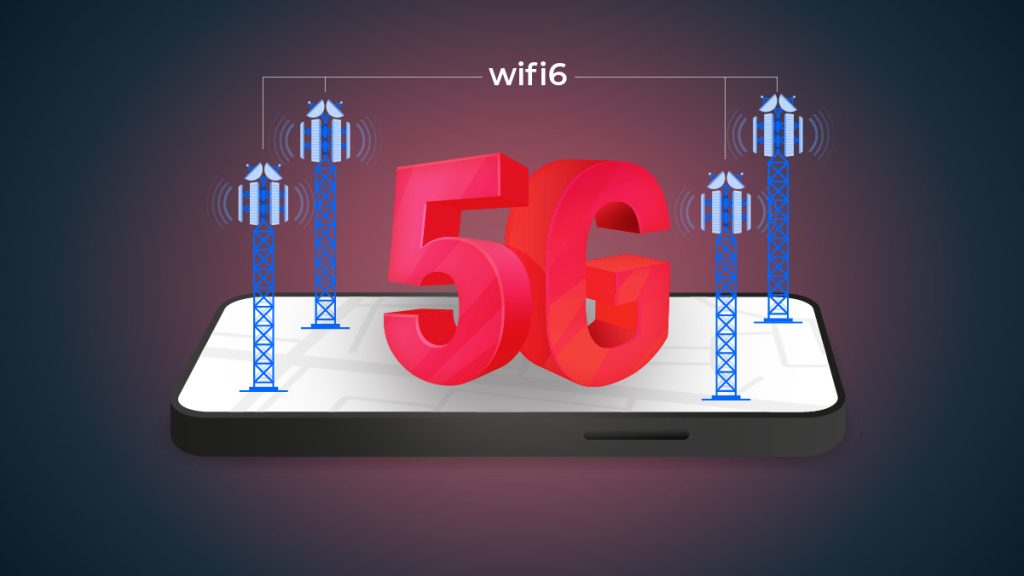
The world is moving full steam ahead, picking up speed with every new invention, innovation, and iteration. As of 2020, Wifi 6 (also known as 802.11ax) was officially certified and made its way into the mainstream. Wifi 6 vs 5G is an essential discussion that experts are having as the new generations of both innovations are increasingly gaining popularity. The Galaxy S10 was one of the first Wifi 6 devices. These devices have only gotten more advanced since then.
What Is Wifi 6?
As per the Wi-Fi Alliance, Wifi 6 is the sixth version or generation of wireless local area networking technologies. Furthermore, it is compatible with the Institute of Electrical and Electronics Engineers (IEEE) 802.15.4. 1ax standards and enables the efficient performance of networked devices in dense conditions. Where the Previous generations of Wifi focused on increasing data rates and speed, Wifi 6 focuses on efficiency and performance.
Dense, high-traffic environments (such as airports, stadiums, trains, and offices) contributed to bandwidth problems. The researchers created this new iteration to combat these problems. However, the emergence of IoT devices relying on a wireless connection to edge devices and data-thirsty apps has rendered Wifi 6 insufficient. Consequently, Wifi 6E takes the technology and runs it on the newly available unlicensed spectrum in the 6Ghz range to deliver even better performance. Both Wi-Fi 6 and Wi-Fi 6E are part of a wireless paradigm shift toward infinitely distributed connectivity.
Isn’t It a Fancy Wifi 5?
Short answer, No. Long answer, it takes a variety of well-understood wireless techniques and uniquely applies them, achieving a significant advance over previous standards yet maintaining backward compatibility with previous generations. Confused? Yes, so was I. Wifi 6 combines all knowledge in wireless connection to provide a better and more advanced performance, all while successfully using older software versions or other hardware systems if need be. It might not work at 100 percent capacity, but it will work well enough to do what it’s designed to do.
What Makes It So Special?
Everything about it is remarkable, especially regarding Wifi 5 vs Wifi 6 vs 5G.
- Target Wait Time (TWT): This feature enables devices to determine when and how frequently they will wake up to send or receive data. It allows 802.11ax access points to increase device sleep time effectively and significantly conserve battery life. In addition, wireless access points and devices negotiate and define specific times to access the medium, thus optimizing spectral efficiency by reducing contention and overlap between users.
- Basic Service Set (BSS) Coloring: This technology for dense network deployments allows several access points and equipment to utilize a single radio frequency channel with increased capacity and less interference. Wi-Fi 6 radios can differentiate between BSSs using a BSS color identifier when other radios transmit on the same channel. An 802.11ax access point can change its BSS color if it detects an OBSS using the same color. The duplicate color detection of an Overlapping BSS (OBSS) is also called a color collision.
- 1024 Quadrature Amplitude Modulation mode (QAM): The Wifi 6 router supports 1024 QAM (10 bits), while Wifi 5 only uses 256 QAM (8 bits). Higher-order modulation ↔ more bits per symbol ↔ more data ↔ more efficient data payload delivery. This feature is necessary for consistently serving high-density locations such as convention centers, stadiums, transportation hubs, and auditoriums.
- Multiple-User, Multiple-In, Multiple-Out (MU-MIMO), and Transmit Beamforming: This technology breaks up the available bandwidth into separate, individual streams sharing the connection equally to reduce congestion. Through Orthogonal Frequency Division Multiple Access (OFDMA), an LTE cellular base station technology, 802.11ax cuts the wait time even more by splitting each stream into four additional streams. While MU-MIMO is a feature of Wifi 5, it does not engage OFDMA. Furthermore, beamforming refers to forming radio signals into “beams” using several antennas. It permits more data to be sent concurrently, allowing access points to manage several devices simultaneously. Although this was partially included in earlier versions of Wi-Fi, it is now standardized in Wi-Fi 6.
What else?
- Wifi Protected Access 3 (WPA3): When connected to a password-protected, closed WiFi network, WPA3 determines the outcome. Wifi 6 supports WPA3 and improves user privacy in open networks. It also configures security for headless IoT devices and adds higher levels of protection to satisfy requirements from the government, the military, and businesses. It adds new capabilities to strengthen cybersecurity in personal networks, more secure password encryption, and improved defense against brute-force attacks in addition to protecting a business’s WiFi.
- Orthogonal Frequency Division Multiple Access (OFDMA): It improves the technology for time-sensitive industry 4.0 automation and VoIP use cases by expanding network capacity generally and reducing congestion and delay. It is a system that splits the WiFi spectrum into smaller subchannels to allow multiple users to broadcast simultaneously. It also enhances the effectiveness of the network.
- Several Other Technologies: Trigger-based random access, dynamic fragmentation, and spatial frequency re-use, all aimed at improving efficiency.
But How Fast Is Wifi 6?
Wifi 6 speed reaches a maximum of 9.6 Gbps. In contrast, Wi-Fi 5 offers a maximum of 3.5 Gbps. These are theoretical maximums; however, practical local networks may not reach this top speed in real-world situations.
Wifi 6 Benefits
The wifi 6 benefits are directly related to its features, especially regarding Wifi 5 vs Wifi 6 vs 5G.
- Improved Security: This perk is mainly due to WPA3. The feature’s use has now become mandatory, per the Wifi Alliance’s decision.
- Increased Battery Life: The TWT feature puts specific devices’ Wifi settings to “sleep” when it’s not being used. It helps IoT and mobile devices maximize battery life by waking up infrequently to receive buffered data.
- High speed Despite Congestion: OFDMA prevents a speed reduction when the network is experiencing an increased device density.
- Increasing Access Point Capacity: The increased access point capacity provides a degree of usability in which users do not experience jitter, lag, or total freezing.
- Beams Focused on Speed and Dependability: Instead of distributing the signal uniformly across the area, beamforming focuses it in the pathway of a wireless device, thus, improving the reliability and speed of the connection.

Wifi 6 vs 5G
Technically speaking, Wifi 6 vs 5G is a moot debate as they are, in essence, completely different. The former is a wireless local area network with virtually no limitations, while the latter is a mobile network controlled by carriers. These are two distinct creations offering two different use cases. Nevertheless, they are certain advantages and disadvantages to both. But they certainly complement each other in a business.
Wifi 6 vs 5G Latency
Designed for the indoors, wifi 6 offers low latency, high speed, and greater device density than 5G. Nevertheless, both 5G and WiFi 6 have unique features.
5G vs Wifi 6 Comparison
In a mainstream enterprise setting, Wifi 6 outperforms 5G in terms of spectrum, terminal ecosystem, network cost, ease of deployment, flexibility, and management requirements. However, it underperforms regarding large-scale outdoor coverage and fails to meet the ultra-low latency requirements (< 10 ms).
In contrast, where Wifi 6 fails or underperforms, 5G excels: MIMO, service latency, mobile roaming, and outdoor coverage. The deployment of 5G indoors is expensive and, quite frankly, a hassle if you consider a carrier’s involvement.
5G and Wifi 6 Benefits
On their own, Wifi 6 and 5G cannot optimize a business’ connectivity. Together, they are an unstoppable force, providing seamless broadband coverage in the office. They promote IoT growth and edge computing capabilities, among other network innovations. Remember, this partnership boosts the remote workforce and the overall network connectivity.
Final Thoughts
Just because one innovation seems to rival another does not necessarily mean they do. In this situation, Wifi 6 vs 5G. both creations are impressive by their own merit. But together, they ensure a secure connection among a business’ members. To each their own upside and downside, a business owner can ultimately apply them as best as possible to play into their strength. One such application is for Wifi 6 to remain dominant in home and business environments, while 5G remains for mobile networks (i.e., smartphones, connected cars, etc.).
Inside Telecom provides you with an extensive list of content covering all aspects of the tech industry. Keep an eye on our Connectivity section to stay informed and up-to-date with our daily articles.